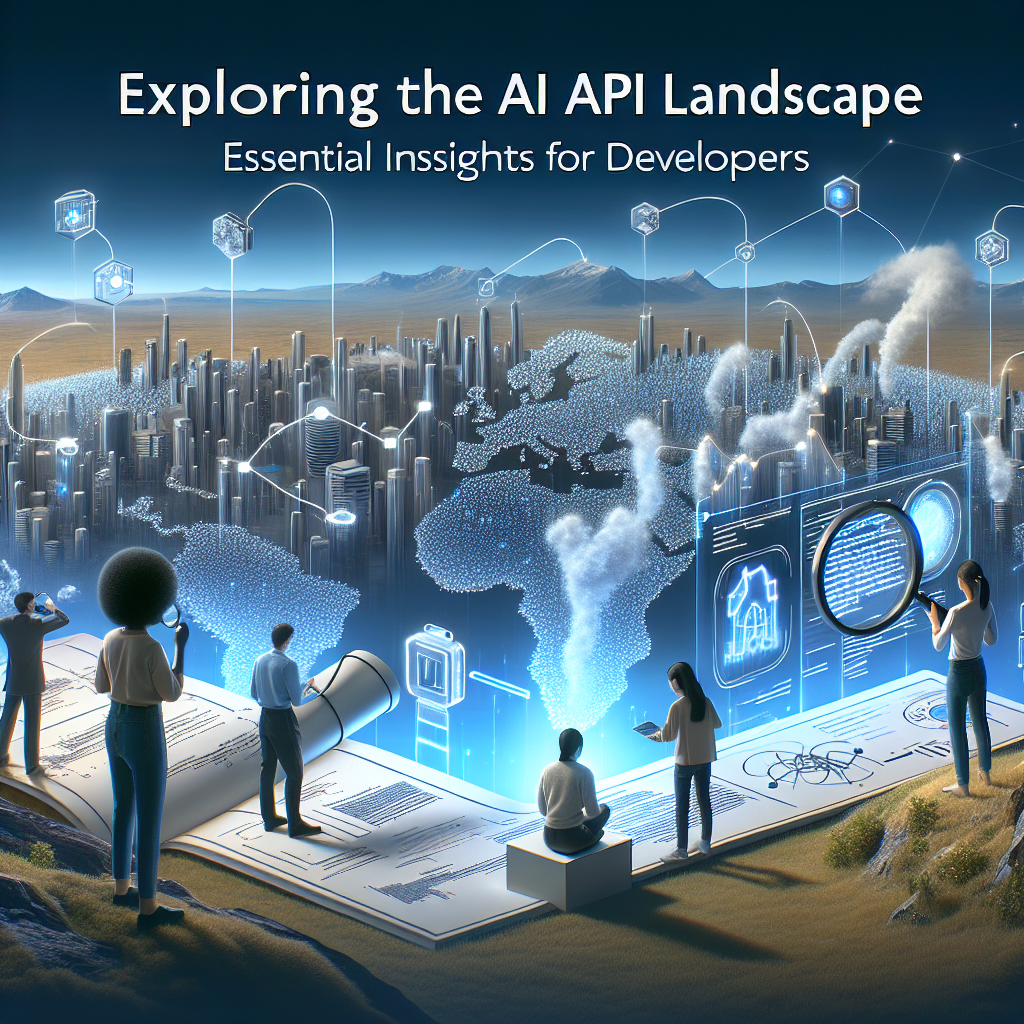As artificial intelligence (AI) advances at a rapid pace, various AI APIs (Application Programming Interfaces) have surfaced, equipping developers with robust tools to elevate their applications. However, with a multitude of choices available, navigating the AI API landscape can be challenging. This article serves as a comprehensive guide for developers to understand and select the appropriate AI APIs for their projects.
What is an AI API?
An AI API is a collection of protocols that enables developers to incorporate artificial intelligence functionalities into their applications without the need to create complex algorithms from the ground up. These APIs provide capabilities such as natural language processing (NLP), image recognition, speech recognition, and machine learning, essentially acting as a link between AI models and the applications that utilize them.
The Importance of AI APIs
-
Reduced Development Time: Utilizing existing AI models allows developers to significantly minimize the time and effort needed to implement intelligent features.
-
Cost Efficiency: Creating and training AI models from the ground up can be prohibitively expensive. Pre-trained models accessed via APIs provide scalable solutions at a considerably lower cost.
- Access to Cutting-Edge Technology: Many AI APIs are maintained by leading technology firms and research institutions, granting developers access to the latest advancements in artificial intelligence.
Key Features to Look for in AI APIs
When selecting an AI API, several essential features should be taken into account:
1. Functionality
Assess the functionalities offered by the API. Some common applications include:
- Natural Language Processing: Understanding and transforming human language (e.g., sentiment analysis, chatbots).
- Image Recognition: Categorizing and analyzing images.
- Speech Recognition: Converting spoken language into text.
- Predictive Analytics: Making data-driven predictions based on historical data.
2. Ease of Use
APIs should come with extensive documentation, code samples, and SDKs. A well-documented API allows for quicker and more successful integration.
3. Scalability
Evaluate whether the API can grow alongside your application. Some APIs offer tiered pricing models suitable for varying usage levels.
4. Security
With the increasing number of data privacy regulations (like GDPR), verify that the API complies with relevant guidelines and employs secure data handling practices.
5. Community and Support
A strong community and support system can assist in troubleshooting issues and providing best practices. Look for user groups, forums, and responsive customer service.
Popular AI APIs to Explore
-
OpenAI GPT-3/ChatGPT: Excellent for natural language processing tasks, including text generation, summarization, and conversational agents.
-
Google Cloud AI: Provides a broad array of machine learning services, including vision, speech, and NLP through a user-friendly interface.
-
IBM Watson: Offers tools for NLP, data analysis, and chatbot development, with a strong emphasis on enterprise solutions.
-
Microsoft Azure Cognitive Services: Features APIs for vision, speech, language, and decision-making capabilities, suitable for diverse applications.
- Amazon Web Services (AWS) AI: Offers a range of AI services, including machine learning models for speech, text, and image processing.
Practical Considerations When Using AI APIs
1. Rate Limits and Quotas
Stay informed about any usage limits or quotas that may affect your application, especially if you expect high traffic.
2. Cost Management
Carefully monitor usage to avoid unexpected charges. Many APIs operate on a pay-as-you-go basis, which could lead to significant costs if not managed effectively.
3. Testing and Validation
Thoroughly test API responses before full integration to ensure they meet your application’s requirements and performance standards.
4. Ethical Use of AI
Reflect on the ethical implications of the AI technologies you are incorporating. Ensure transparency regarding AI usage in your application and prioritize responsible practices.
Conclusion
Although navigating the AI API landscape can be intricate, understanding essential features, choices, and considerations can help developers find the right tools to enhance their applications. With the appropriate API, developers can streamline their workflows and extend the limits of what’s achievable in software development, providing innovative solutions to users globally. As the AI landscape evolves, staying informed and adaptable will be crucial in harnessing its full potential.

